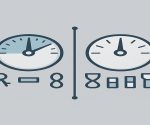The expenditure method of national income is widely accepted to measure a country’s economic performance. It calculates the Gross Domestic Product (GDP) by summing all expenditures made by households, businesses, the government, and net exports. It helps measure a country’s total output by analysing how money flows through spending patterns. It measures the total value of all final goods and services purchased in an economy during a specific period. It focuses on how money is spent across various sectors—consumer spending, business investment, public expenditure, and international trade. This method is considered reliable as it gives a complete picture of economic activity and demand in a country. Governments and economists prefer this method for its broad coverage of the economy. It captures monetary exchanges from key financial specialists, including family units, businesses, and the public sector. This makes the use strategy of calculating national wage appropriate for creating national approaches and measuring financial well-being.
GDP Calculation Formula Using the Expenditure Method
To calculate GDP using the expenditure method, the following formula is used:
GDP = C + I + G + (X – M)
This equation adds up different categories of spending in the economy to arrive at the Gross Domestic Product. Each component plays a critical role and reflects various sectors of the economy, contributing to national output.
| Component | Meaning | Example |
| C | Consumption | Food, clothing, rent, and health services |
| I | Investment | Machinery, buildings, tools |
| G | Government Spending | Roads, defence, and public education |
| X | Exports | Goods sold to other countries |
| M | Imports | Goods bought from other countries |
The consumption part (C) includes household purchases on items like groceries, services, and rent. Investment (I) comprises capital goods like buildings and machines that help businesses grow. Government spending (G) covers money spent on public services, and net exports (X–M) represent the international trade balance. This formula is widely used in national accounting to estimate GDP using the expenditure method. It ensures that each economic agent’s spending is captured for an accurate GDP figure.
Components of Expenditure Method in National Income
There are four fundamental components of GDP when utilising the consumption strategy. These are utilisation, venture, government use, and net sends out. Each component speaks to distinctive financial donors influencing the country’s total yield.
Consumption Expenditure (C)
Consumption includes all the spending done by households on goods and services. This is the most significant portion of GDP in most economies, especially in countries with strong domestic demand. It includes items such as food, electricity, clothes, and rent. People spend on durable goods (like refrigerators) and non-durable goods (like groceries). They also pay for services like education, transportation, and healthcare. All these purchases are added together to form the consumption component in the GDP calculation formula. In economies like India, household consumption in GDP is a strong indicator of economic momentum. When consumers spend more, businesses produce more, increasing employment and income.
Investment Expenditure (I)
Investment refers to the money businesses and individuals spend on capital goods used to produce other goods. These include things like factory buildings, equipment, and software. It does not involve purchasing stocks and bonds, as these are not direct capital goods. Venture in national salary drives long-term financial development. Higher venture leads to more generation capacity, a superior framework, and expanded work. Businesses grow operations and enhance more when the venture is tall. This component is significant in deciding a country’s future development. Venture boosts the current generation and guarantees the maintainability of development over time.
Government Expenditure (G)
Government spending includes expenses by the local, state, and central governments. This includes spending on infrastructure, healthcare, defence, education, and salaries of public servants. It helps develop public goods and services that support the economy. Government spending on GDP plays a stabilising role, especially during economic slowdowns. When private sector investment is low, government spending ensures that money keeps circulating in the economy. It boosts demand, which leads to increased production. Importantly, this component does not include transfer payments such as pensions or scholarships. These payments are not made in exchange for goods or services, so they do not add to GDP.
Net Exports (X–M)
Net exports measure the difference between what a country sells to other countries and what it buys. Exports bring money into the economy, while imports take cash out. A positive value means the country earns more from trade than it spends. Net exports of GDP are crucial for export-driven economies. Countries like China and Germany have strong net exports, which help them maintain economic stability. A trade surplus boosts national income, while a deficit reduces it. In India, this component varies depending on global commodity prices, exchange rates, and demand for Indian goods. A balanced trade policy helps maintain a healthy GDP.
Calculation of National Income Using the Expenditure Method
Using the GDP calculation strategy, nations follow an organised step-by-step process to guarantee exactness. These steps offer assistance in achieving national salary viability and maintaining a strategic distance from duplication of information.
Step 1: Distinguish Utilisation (C)
Recognise all sorts of private investing done by family units. This incorporates strong and non-durable merchandise, utility bills, and services like health and education. Information can be accumulated from national overviews and family investing reports. Incorporating all lawful purchases and prohibiting unlawful or unrecorded exercises is vital. Governments regularly utilise national measurements, workplace, and census information for this step. A clear picture of customer behaviour makes a difference in appropriate budgeting and planning.
Step 2: Calculate Speculation (I)
This incorporates investing by businesses in capital products that make strides in generation. These products include industrial facilities, machines, apparatuses, and lodging structures. Government sources and company financials regularly give this information. Speculative investing boosts efficiency and could be a sign of financial certainty. If speculation is low, it shows destitute financial well-being and diminished trade-positive thinking. Nations with solid speculation rates ordinarily encounter speedier GDP development.
Step 3: Include Government Investing (G)
This incorporates costs on foundation, compensation, military, and public services. Governments record each consumption in their budgets, which is freely accessible. Fund divisions and financial services collect this information. Government use is regularly utilised to fortify the economy. Particularly amid a retreat, expanded government investing can anticipate job losses and keep demand relentless. This step guarantees that the open segment effect is accounted for.
Step 4: Decide Net Sends out (X–M)
Trades are merchandise sold to remote nations and are included in the GDP. Imports are products bought from outside and are subtracted. Traditional information and exchange reports are utilised for this. This is often a key indicator of a country’s exchange execution. A high level of imports and fewer trades lead to a trade surplus, whereas more exports make an exchange surplus. This adjustment influences the savings from outside trade and GDP.
Step 5: Apply GDP Formula
Now apply the GDP equation by embedding values in each component. Include all figures:
GDP = C + I + G + (X – M).
This gives the final figure of GDP based on the expenditure method. This result shows the total value of goods and services produced. Governments use this to set targets, make economic forecasts, and adjust policies.
Precautions in the Expenditure Method of National Income
While calculating GDP using the expenditure method, certain precautions must be taken. These ensure accuracy and prevent over- or under-estimation of the economy.
Avoid Double Counting
Only final goods should be included in the calculation. Intermediate goods used in production are already reflected in final product prices. Including them again would inflate the GDP. For example, if a car manufacturer buys tires, the cost of the tires is part of the car’s price. Counting both would lead to inaccurate figures. Therefore, economists carefully track production chains to avoid repetition.
Exclude Transfer Payments
Installments like unemployment benefits and grants don’t reflect real generation. These are exchanges of wages and not installments for products or services. Counting them would lead to misleading information. Even though they influence individual income, they don’t create financial esteem. Hence, they must be evacuated from the use calculations.
Adjust for Depreciation
Assets lose value over time due to wear and tear. This is called depreciation. Adjusting for this gives us the Net Domestic Product (NDP) instead of GDP. This makes the data more realistic. Ignoring depreciation would result in overestimating a country’s productive capacity. Governments use depreciation rates fixed by national income committees.
Ignore Non-Market Transactions
Activities like cooking at home, tutoring family, or charity work do not involve market exchanges. These are not included in GDP as no money changes hands. Although these activities have value, they do not fit the definition of economic transactions. Including them would be complicated and unreliable. Hence, only market-based activities are counted.
Correct for Inflation
GDP figures should be adjusted to reflect price changes over time. Nominal GDP must be converted into real GDP using inflation indices. Without this adjustment, growth may seem higher due to rising prices, not actual output. Inflation adjustment ensures an accurate picture of economic progress. It also helps in comparing growth across years.
Expenditure Method of National Income FAQs
1. What is the expenditure method of calculating national income?
It measures GDP by adding consumption, investment, government spending, and net exports. This shows total expenditure on the economy.
2. How do you calculate GDP using the expenditure method?
Use the formula: GDP = C + I + G + (X – M). Add all final expenditures to get GDP.
3. What are the four components of the expenditure method?
They are consumption, investment, government spending, and net exports (exports minus imports).
4. Why is the expenditure method important in economics?
It helps track economic activity through spending patterns and supports policy-making.
5. What precautions are needed when using the expenditure method?
Avoid double-counting, exclude transfer payments, adjust for inflation, and ignore non-market transactions.


